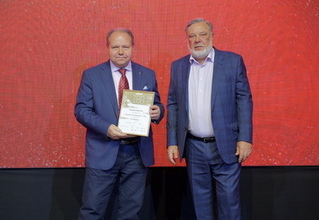THz Film Polarizers
| Download THz Film Polarizers Datasheet (PDF, 924 KB) |
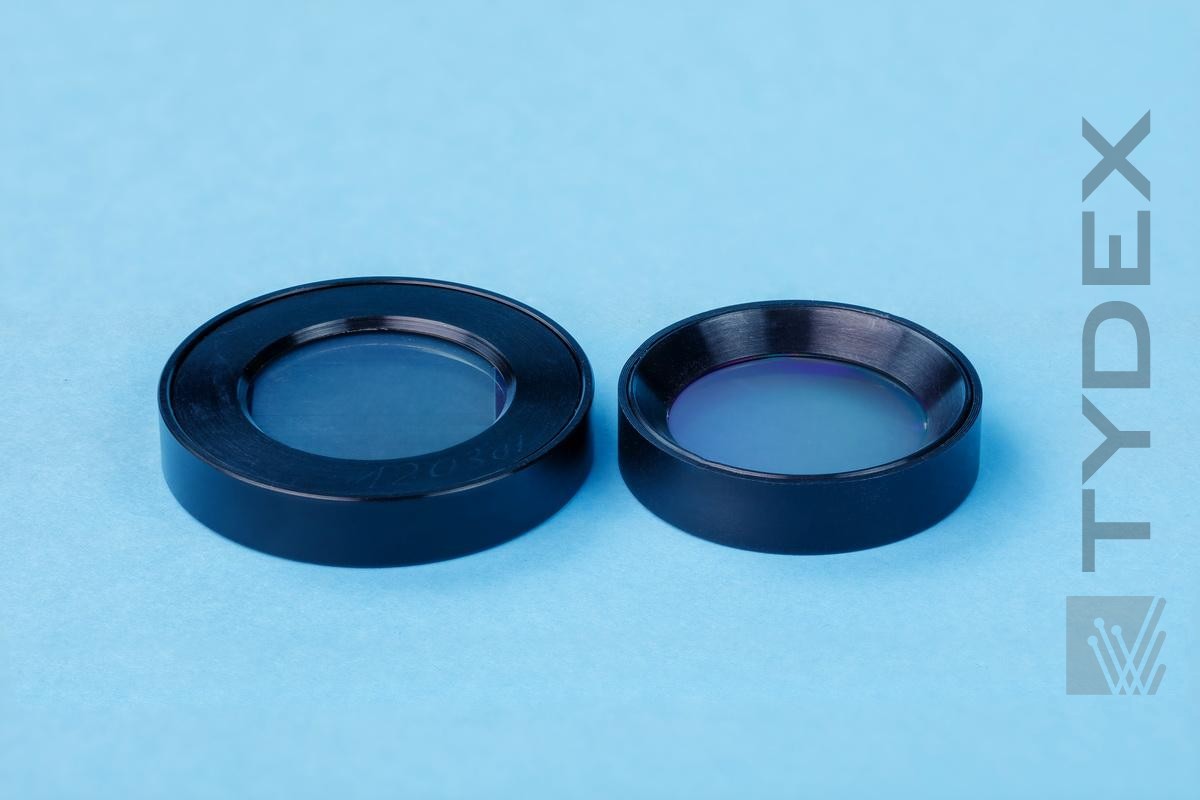
We offer polypropylene film-based polarizers for far IR and THz spectral ranges. The film is covered with sine-shaped grooves partially coated with aluminum. The result is that polarizer behaves as a transmission grating.
We manufacture polypropylene polarizers using two slightly different technologies: one is used to obtain gratings with an aperture from 25mm to 45mm, and the other - from 50mm to 100mm. Small and large polarizers slightly differ in the level of transmission of unwanted polarization and, as a result, in the extinction coefficient, mostly in the long-wavelength range.
The transmittion spectra of the polarizers was measured by two instruments. In the short-wave range 0.9 – 670 μm (333.1 – 0.45 THz), FT spectrometer Bruker VERTEX 70 was used. In the long-wave range 250 – 3000 μm we used Menlo Systems TERA-K8 terahertz time-domain spectrometer with 600 μm dipole antenna (fc=0.5 THz). The measurement results are given in figs. 1 and 2.
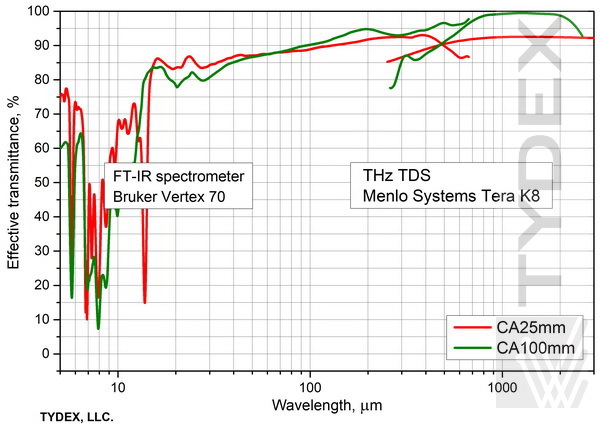
Fig. 1. Transmittance of a polypropylene polarizers with 25mm and 100mm apertures for desired polarization
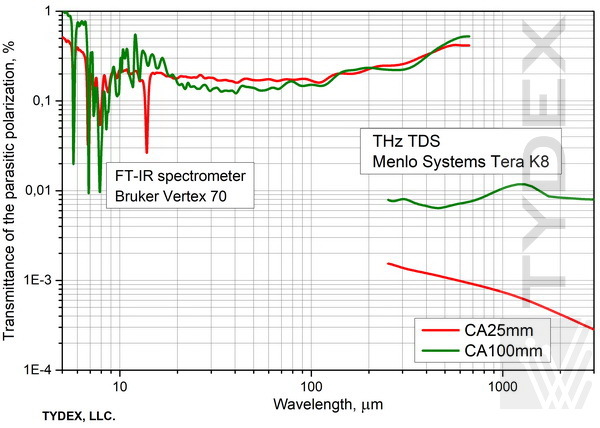
Fig. 2. Transmittance of a polypropylene polarizers with 25mm and 100mm apertures for parasitic polarization
The gap between unwanted transmittance curves (fig. 2) is due to the difference between dynamic ranges (DR) of the spectrometers that affects noise level.
Bruker VERTEX 70 spectrometer has a peak DR value of 40 dB in short wavelength range, 4-5 μm. On the other hand, in 15-100 μm range its DR value is only 22-20 dB, decreasing for longer wavelengths.
Time-domain THz spectrometer Menlo TERA-K8 provides DR value of 60 dB@600 μm for electric field amplitude measurements. As a result, the unwanted polarization transmittion curves were much lower and closer to actual values for 300-3000 μm range.
The figures below depict degree of polarization and coefficient of extinction of the output radiation. Both parameters were determined from transmittance values for desired and unwanted polarization. Their values as calculated from each spectrometer data differ by several orders of magnitude due to the reasons described above.
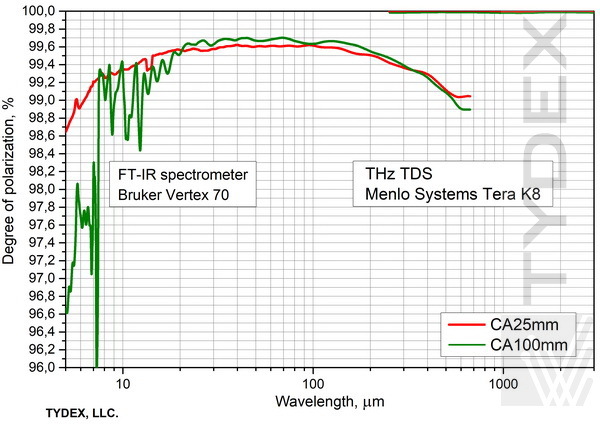
Fig. 3. Degree of polarization for a polypropylene polarizers with 25mm and 100mm apertures
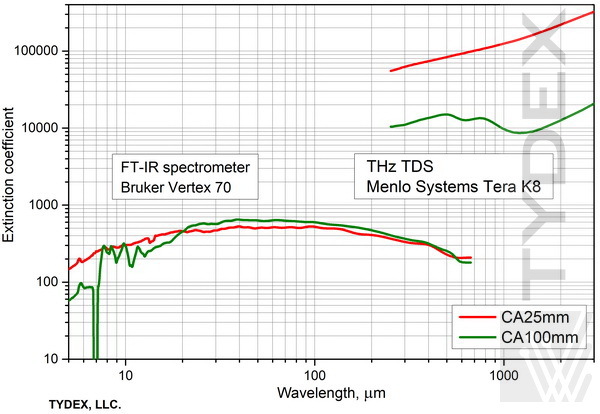
Fig. 4. Extinction coefficient for a polypropylene polarizers with 25mm and 100mm apertures
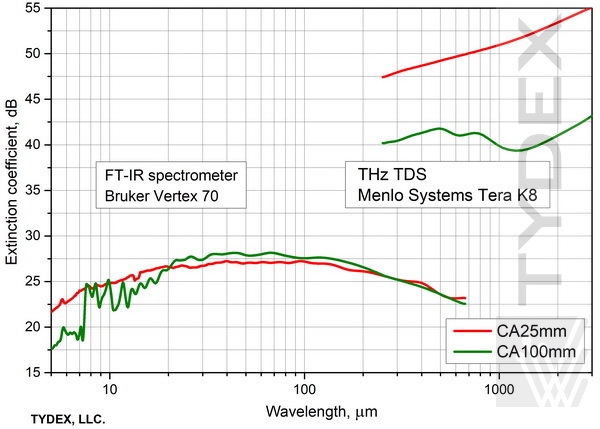
The curves above indicate excellent quality of our polarizers in a very wide wavelength range. Please note that actual measurement results can be different from the values given above depending on spectrometer type and measurement mode.
The table below lists guaranteed polarizer parameters.
Specifications:
| Substrate material | Polypropylene | |
| Spectral range, μm | >=15 | |
| Aperture, mm | D25-50 | D50-100 |
| Grooves per mm | 1200 | |
| Effective transmittance K1, % |
>80 @15-3000 μm |
|
| Unwanted polarization transmittance K2, % |
0.2@15 μm |
0.3 @15 μm |
| Degree of polarization P1=(K1-K2)/(K1+K2), % |
99.5@15 μm |
99.3 @15 μm |
| Extinction coefficient E=K1/(2xK2) | >350 @15-250 μm >55000 @250-3000 μm |
>250 @15-250 μm >8500 @250-3000 μm |
| Extinction coefficient E=10*Log(K1/K2), dB |
>25@15-250 μm >47@250-3000 μm |
>24@15-250 μm >39@250-3000 μm |
Typical applications of film polarizers include:
- THz microscopy;
- Studying molecule orientation in crystalline and polymer films;
- Imaging optics;
- Sensors and detectors;
- Fourier spectroscopy;
- THz spectroscopy studies.
Key properties:
- Performance in a very wide spectral range from mid-IR to THz;
- High transmittance in far IR and THz regions;
- High degree of polarization of transmitted radiation.
Polarizers are supplied in holders (protective rings marked with groove direction).
For price quotation and delivery please fill in our Request Form.
Optics is ready to be shipped!
Optics Stock
Shipment/ Payment/ Warranty ...

